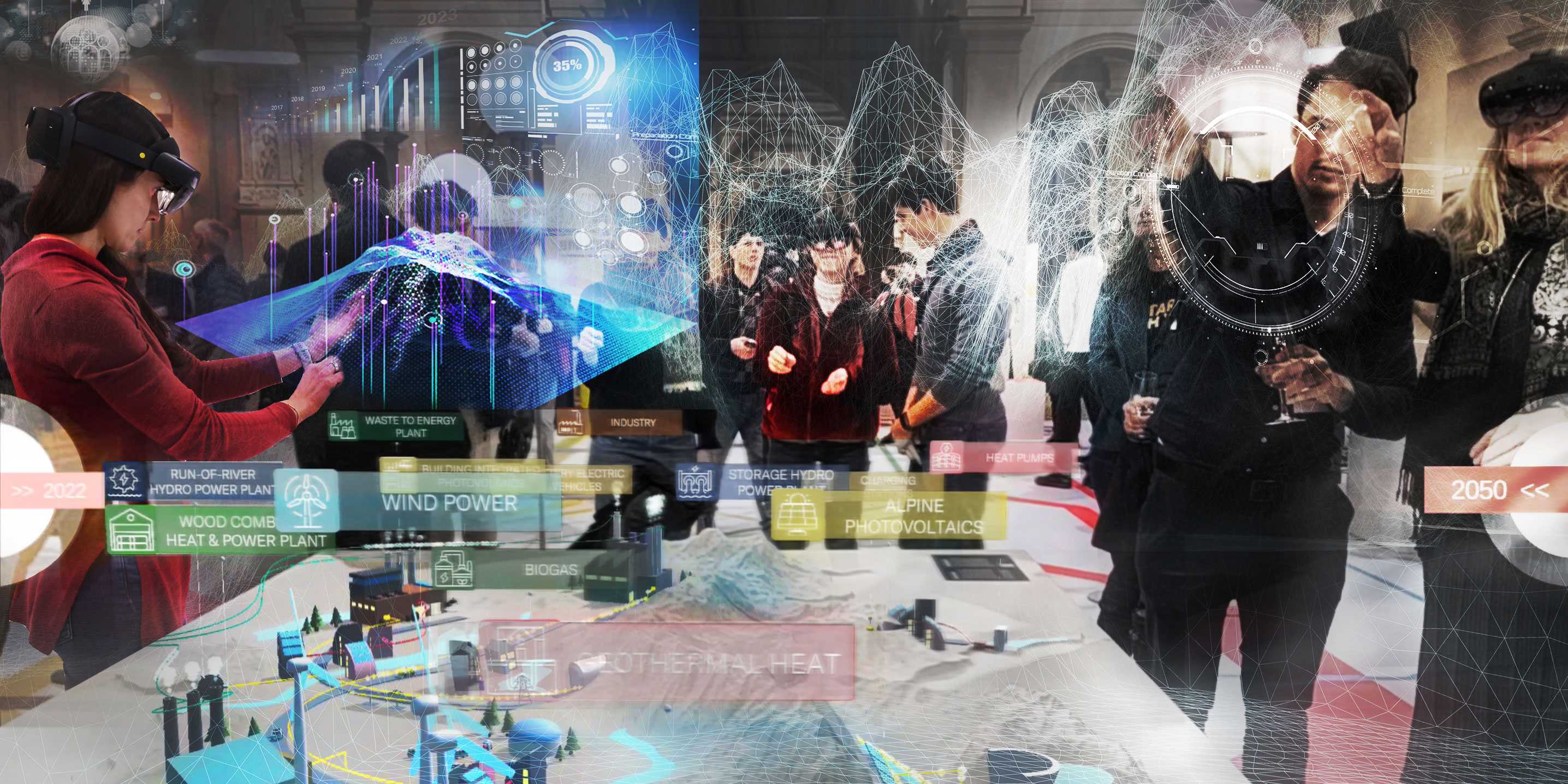Albert Lück Foundation supports project to innovate construction industry with XR
How can the construction industry improve its carbon footprint to net zero by 2050? What contributions can digital solutions make? These questions are central to the new lighthouse project of the Department of Civil, Environmental and Geomatic Engineering at ETH Zurich. The aim is to develop a spatial computing platform to accelerate the transition for a more efficient and environmentally friendly construction industry. The interdisciplinary project is funded by the Albert Lück Foundation.

The construction sector is responsible for about 40 percent of global CO2 emissions, with about 10 percent coming from building materials and the remaining 30 percent from building operations. In Switzerland, the construction sector alone is responsible for 80 percent of waste. The need for action is clear: to meet climate change targets, the architecture, engineering and construction (AEC) industry must significantly reduce its CO2 emissions. In the face of this pressure to change, the use of digital technologies is becoming an indispensable prerequisite.
The goal of the lighthouse project is to develop an innovative spatial technology – a spatial compute platform – that could fundamentally change processes and communication in the AEC industry. In essence, spatial computing provides an immersive experience that uses sensors and cameras to create a digital model of objects, environments and machines. Digital content merges seamlessly with physical space. Direct human-machine interaction facilitates collaboration between decision-makers, optimises multiple tasks in real time, and creates the framework for a sustainable, carbon-neutral AEC industry.
Focus on inspection, assembly and operation
The main focus of the project is the development of Extended Reality (XR) tools for the inspection, assembly and operation of existing or new digitally fabricated buildings and infrastructure.
In the area of inspection, the focus is on quality control in order to extend the service life of structures while minimising the use of new raw materials. In the area of assembly, particular attention is paid to the efficient disassembly of reusable components during refurbishment in order to support the concept of circular construction and reduce waste. Another goal of the platform is intelligent building operation. This includes minimising energy consumption and increasing the use of renewable energy in order to maximise the energy efficiency of buildings.
In this project, the development of the spatial compute platform is specifically tailored to the needs of the AEC industry and is designed to facilitate the adoption of sustainable technologies and practices.

Interdisciplinary and open-source
This four-year lighthouse project of the Department of Civil, Environmental and Geomatic Engineering is funded by the Albert Lück Foundation and hosted by Design++, the Center for Augmented Computational Design. In addition to novel applications for XR in the AEC industry, a key outcome of the project will be an open source platform that can be used by other professors at ETH.
The project is led by four Co-PIs: Dr. Danielle Griego, Prof. Dr. Robert J. Flatt, Prof. Dr. Bernd Bickel, and Prof. Dr. Catherine De Wolf and undertaken by three researchers including Bharath Seshadri and Stefan Zimmermann. Project collaborators include faculty from the Departments of Civil, Environmental and Geomatic Engineering and Architecture: Prof. Dr. Ueli Angst, Prof. Dr. Benjamin Dillenburger, Prof. Fabio Gramazio & Prof. Matthias Kohler, and Prof. Dr. Arno Schlüter.